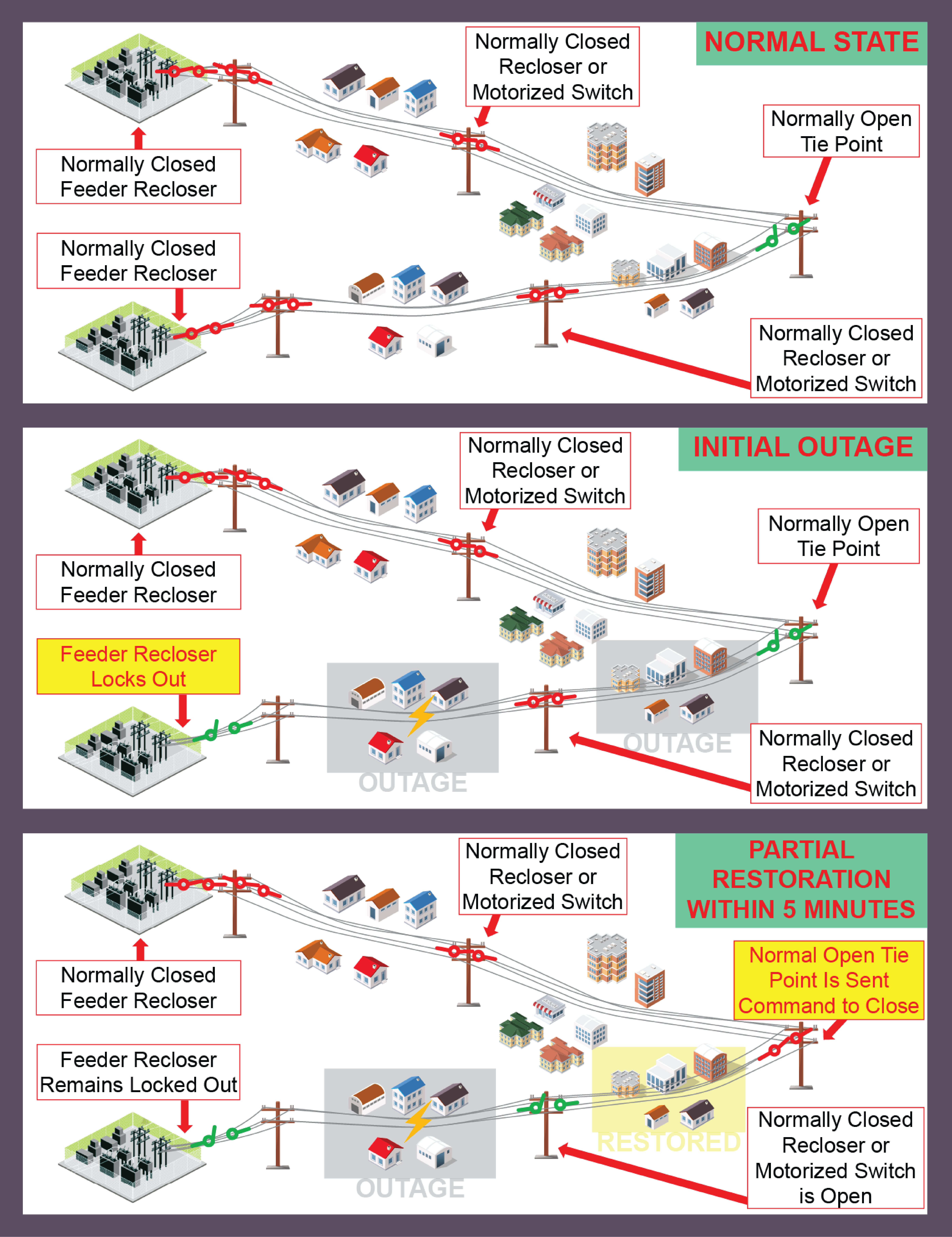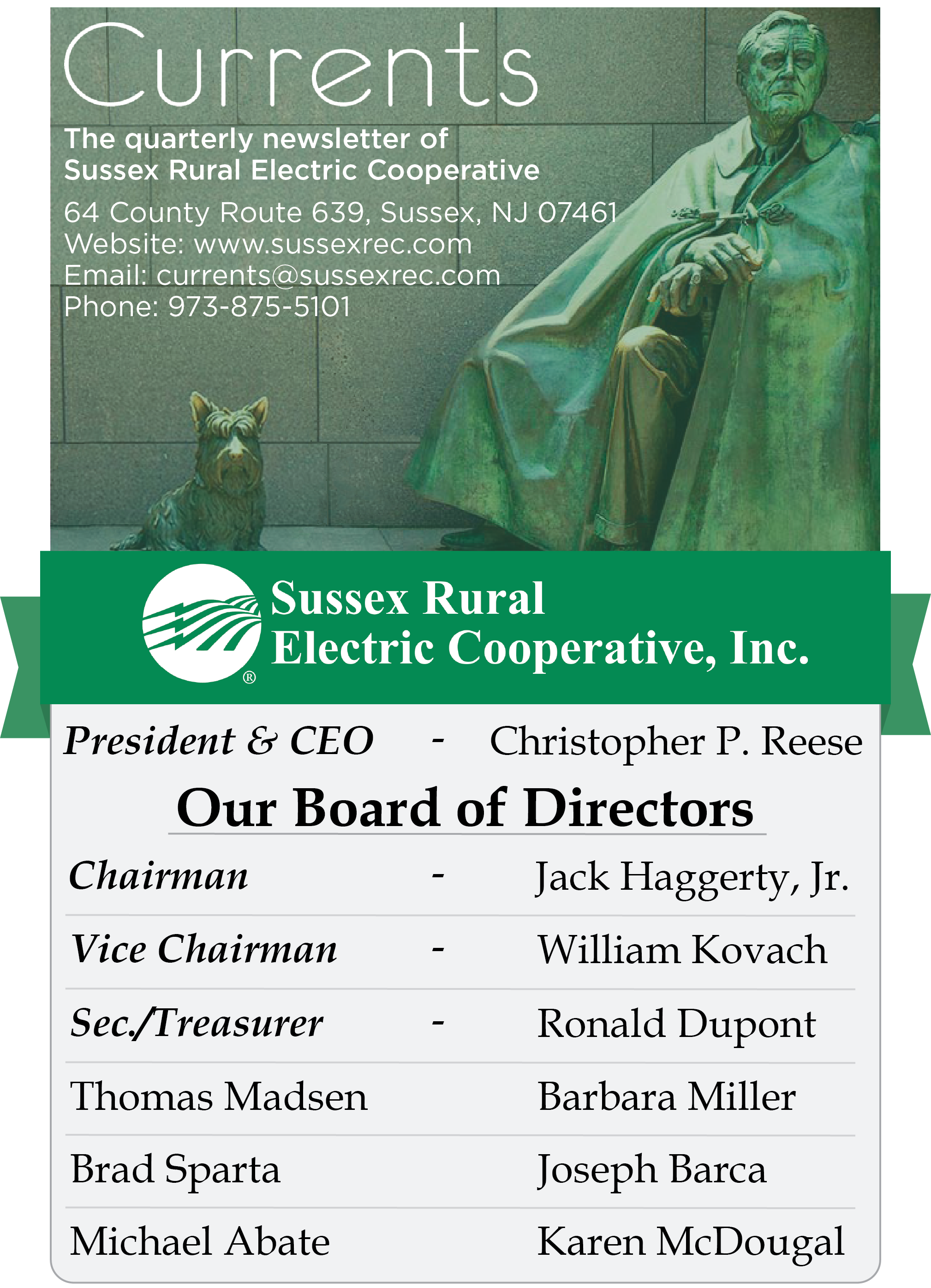To view the full print/pdf version of 2025's issue 3 of Currents, click here
For previous issues of Currents, visit our Currents Library
FLISR: Keeping the Lights On & Cutting Outages Short
By: Chris Reese, President & CEO
Email: contacttheceo@sussexrec.com
For all the work we do at Sussex Rural Electric Cooperative to prevent outages before they happen, we cannot control factors such as extreme weather, falling trees, and car accidents. However, we are constantly innovating to better respond to these factors.
Sussex REC has long been called the most technologically advanced utility in the state. In 1997, we were one of the first NJ utilities to fully embrace and invest in a SCADA (Supervisory Control and Data Acquisition) system. SCADA allows us to remotely monitor power outages and to reduce outage times by “backfeeding” power using remote controlled switches that re-route electricity from one part of our territory to another. This system has served us well, and we’re pleased to announce that we’ve recently added another high-tech tool to our tool belt: FLISR (Fault Location, Isolation, and Service Restoration).
This software greatly reduces the magnitude and duration of outages by automatically isolating a problem area and transferring consumers to adjacent circuits. “FLISR basically takes SCADA to the next level.” says Patrick Murphy, Staff Engineer at Sussex REC.
While FLISR does not prevent outages, it can keep the power on for as many members as possible when one does occur. FLISR works with our existing SCADA-enabled grid devices to greatly reduce an outage’s magnitude by automatically isolating problem areas and determining what areas are safe to backfeed. This helps us “power on” members downstream of an outage faster, so they are not left waiting while crews make repairs.
One example took place on November 12th, when a large tree on El’s Way in Vernon fell and caused an outage for 996 homes. In under a minute, FLISR was able to redirect power to restore power to 750 of those homes. Crews were then able to respond to restore power to the remaining members in the immediate vicinity of the problem.
“When a device locks out, FLISR checks surrounding areas within 30 seconds to see where backfeeding can occur,” says Murphy. When FLISR detects an outage, it assesses the surrounding area and automatically “switches” affected homes and businesses to circuits that are powered on, “so an outage that could last hours for some members can instead be restored in seconds.”
We know nobody likes a power outage – not the Cooperative and not our members. Sussex REC does everything it reasonably can to prevent them, maintaining our rights-of-way with an aggressive tree trimming program, performing regular and periodic maintenance on our lines and equipment, replacing older poles and wires, and investing in or upgrading our use of technology. Even with all of these programs in place to prevent outages, storms, invasive species that damage and kill trees, and car-pole accidents are still going to happen and power outages will still occur.

In the “normal state” of operation, reclosers have not been tripped and remain closed. Open tie points allow two circuits to be interconnected.
During an outage, reclosers lock out, shutting off power. FLISR continuously monitors the status of our equipment and can react to faults within seconds.
When an outage is detected, FLISR automatically will close tie points to keep an outage’s impact limited to those in the area of the fault.
A 2014 study by the Department of Energy found that electric systems in the U.S. that use FLISR can cut their number of service interruptions by 45% and the duration of outages by 51%. Reducing outage times via our FLISR system can help save money for members by preventing spoiled food and shortening the amount of time that they are forced to run a generator for backup power. It also cuts down on business losses for commercial members who suffer reduced sales or manufacturing productivity during outages.
As of September of 2021, about 26% of electric co-ops nationwide have deployed FLISR systems, and another 33% are planning to do so, according to a smart grid report by the National Rural Telecommunications Cooperative and the National Rural Utilities Cooperative Finance Corp.
Our Co-op began testing the system in 2022, running it in “semi-automatic” mode to make sure it could be implemented reliably and safely. During this “test period,” when FLISR detected an outage it would document the recommended steps to switch on the highest number of homes possible. A member of our engineering team would review those orders and either approve them or make adjustments. “Running it in semi-automatic helped us gain confidence in the new system,” says Murphy, “and that it was safe for our linemen.”
After two years using the program, we switched FLISR to run in automatic mode in the fall of 2024. Now, FLISR is always running, ready to respond automatically to outages that pop up in our service territory or at Picatinny Arsenal, where we maintain the Army base’s electric grid.
The automatic switching doesn’t happen for every outage, just when conditions allow it – depending on where the fault is and what the status of other circuits are. However, it has already proven to be a great tool that helps reduce outage times and limit how they disrupt our members’ daily lives.
FLISR is another example of how your Cooperative strives to provide its members with the highest quality of service. As a much smaller entity than our investor-owned counterparts, we do more with less. Our small size allows us to concentrate our efforts on what is best for our 12,000 members in northern Sussex County and across the border into southern Orange County, NY. You are always our focus, making it possible for us to move and react to new technology and opportunities more quickly and efficiently than large corporations.




